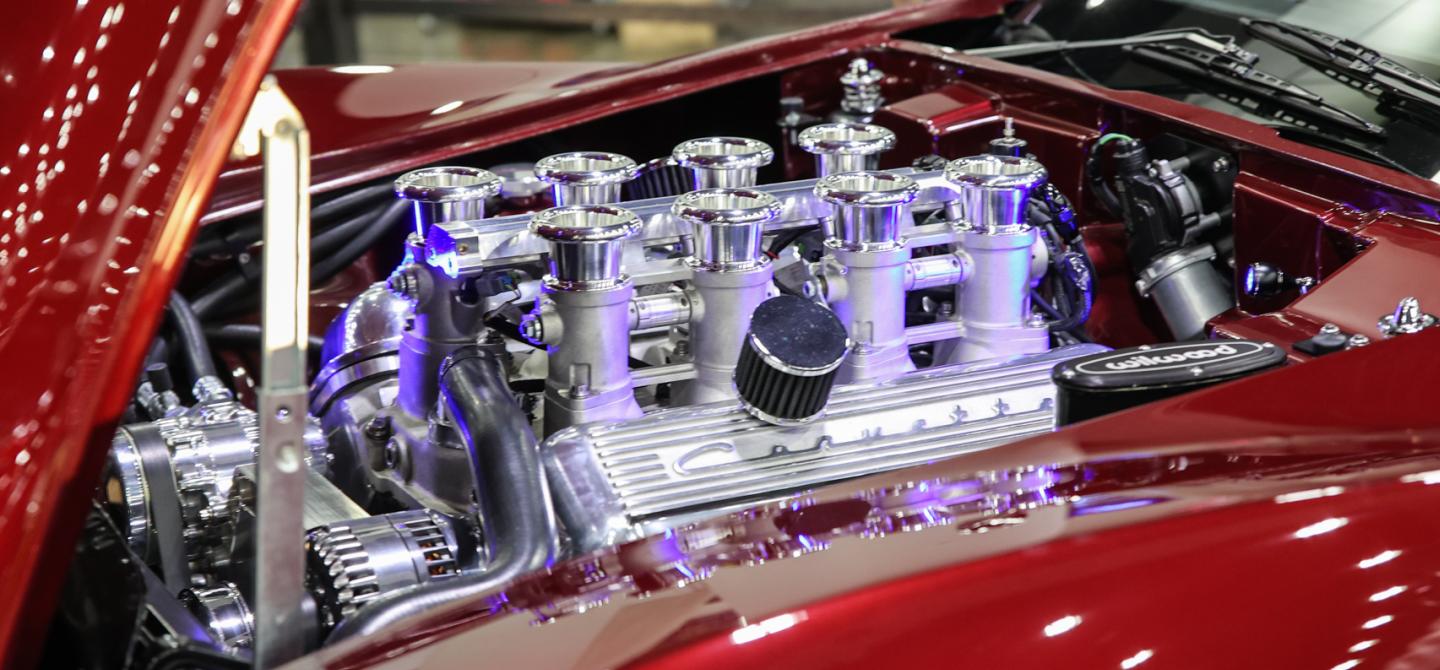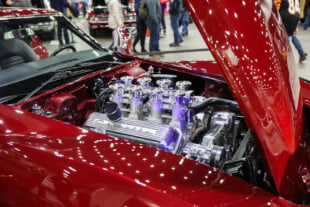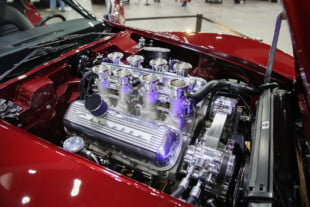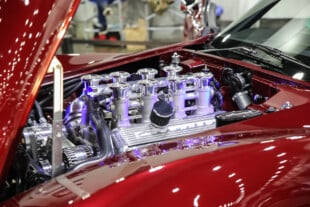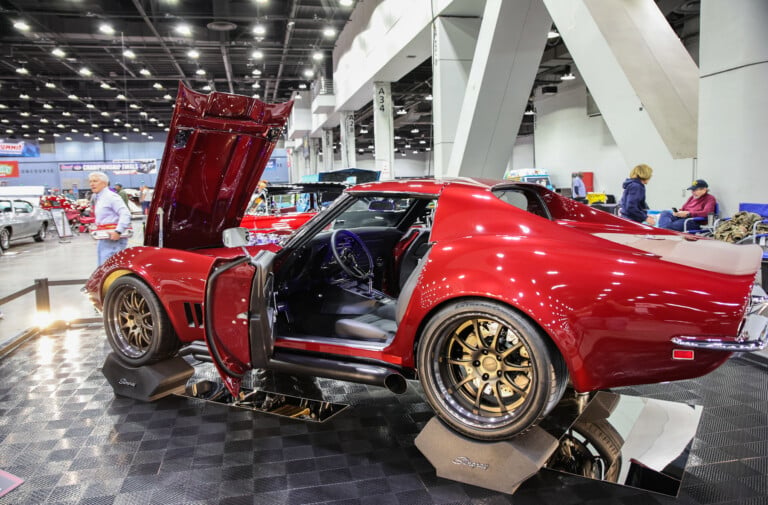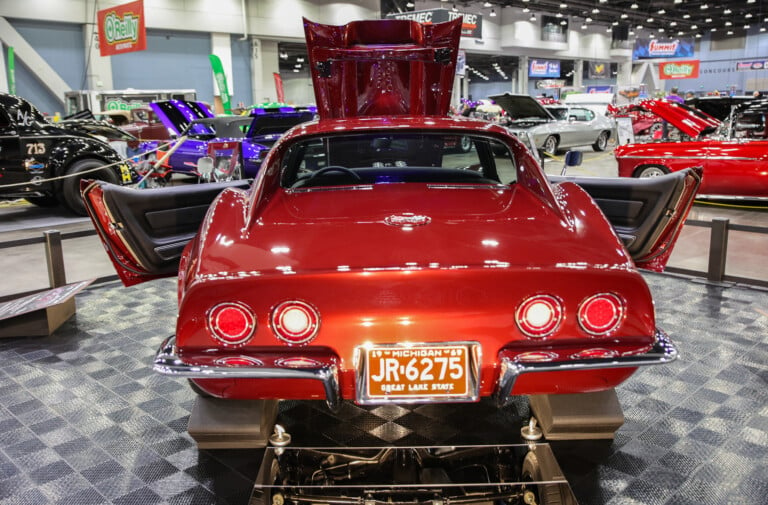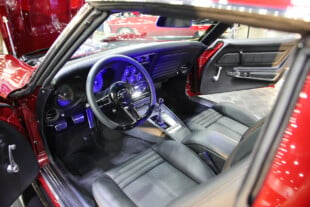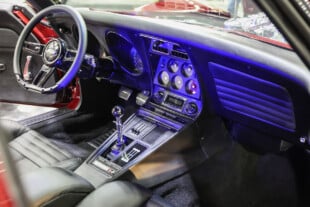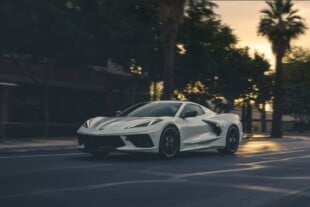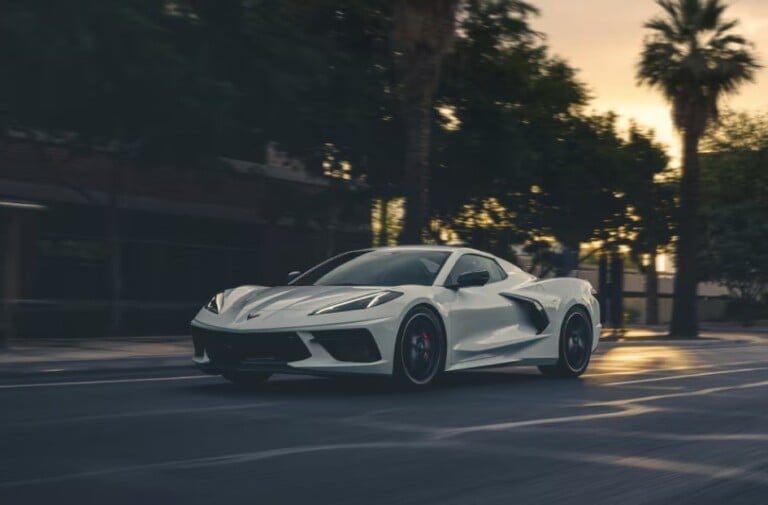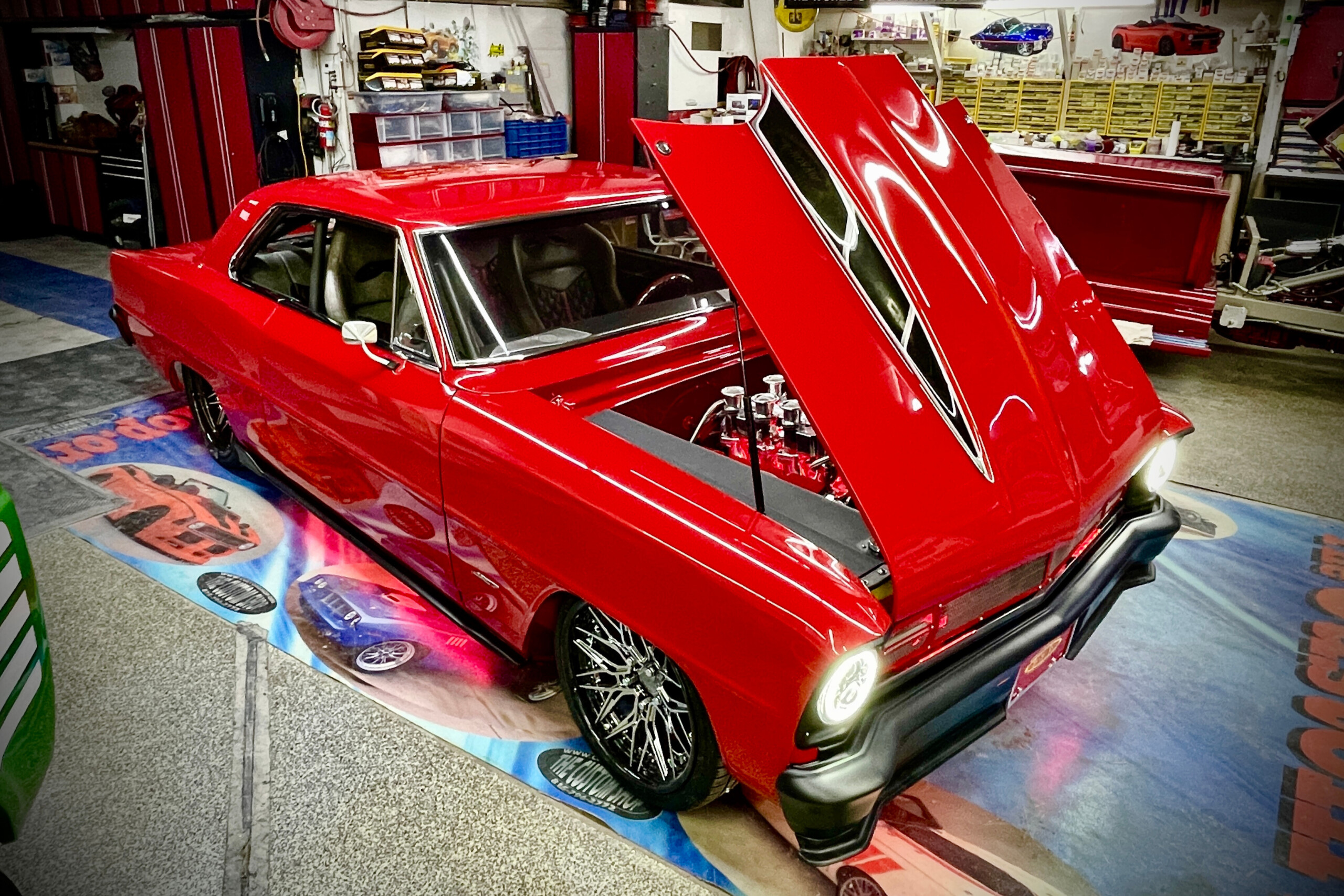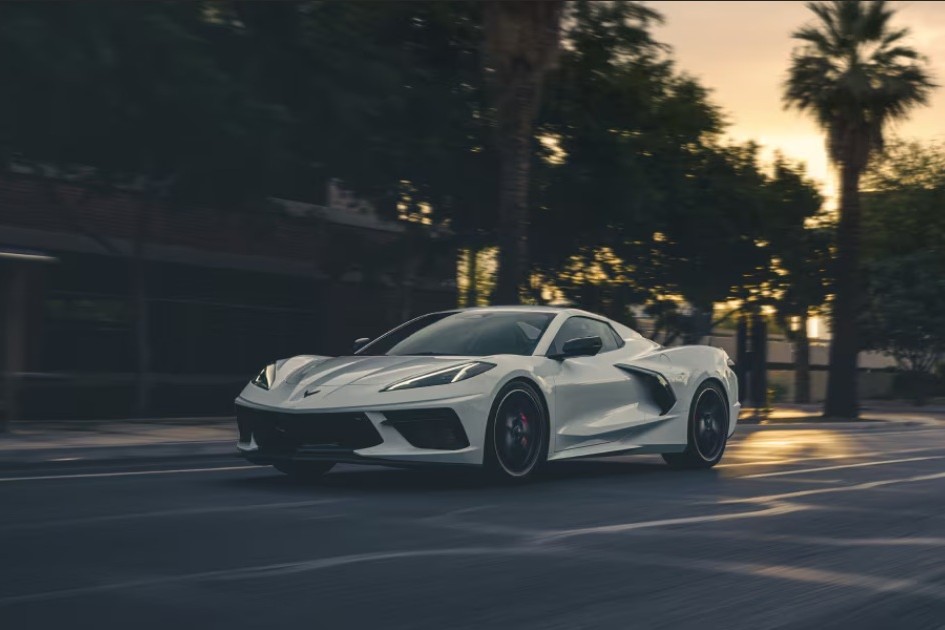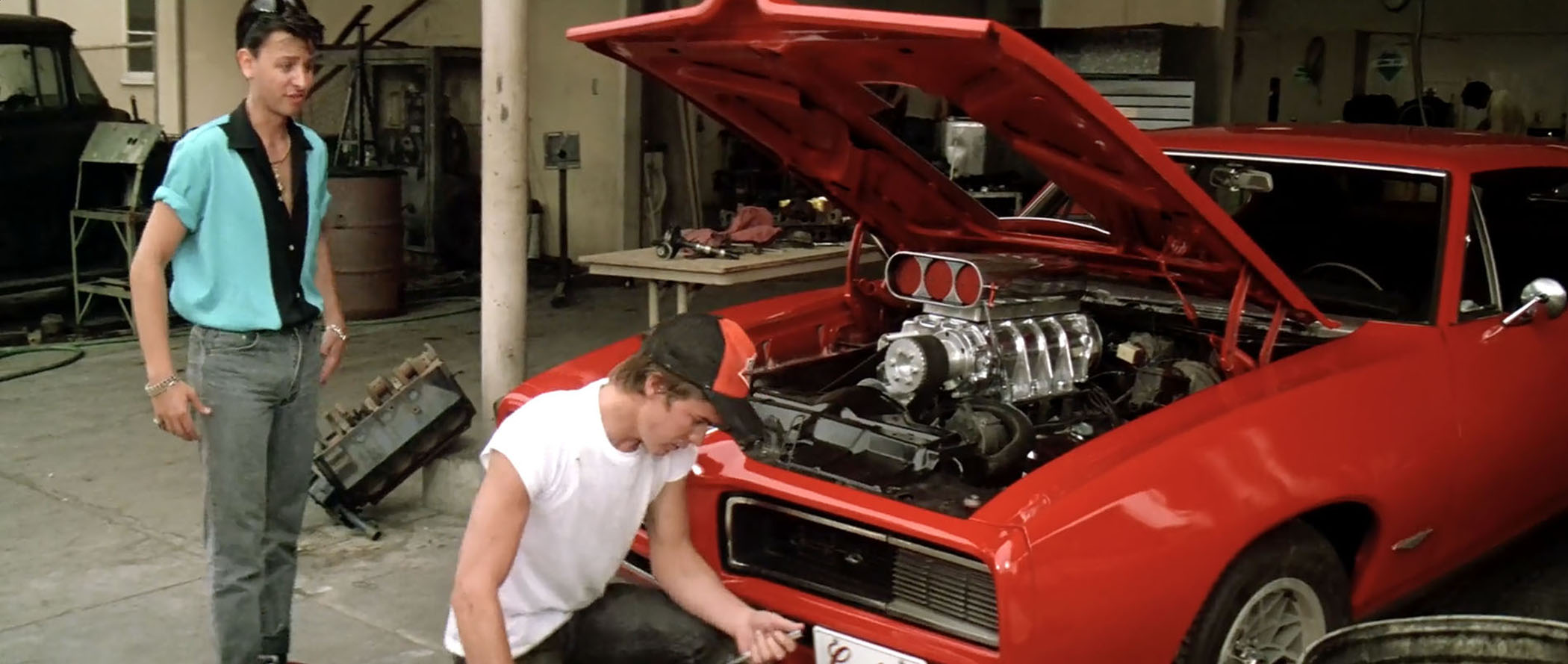It is rare to find a classic Corvette that still sports its original big-block Chevy engine. From Day One, owners were racing them on street and track, and generally abusing the heck out of them. Plenty of Rat motors (and small-blocks, too) were replaced under warranty—and a lot more at the owners’ expense.
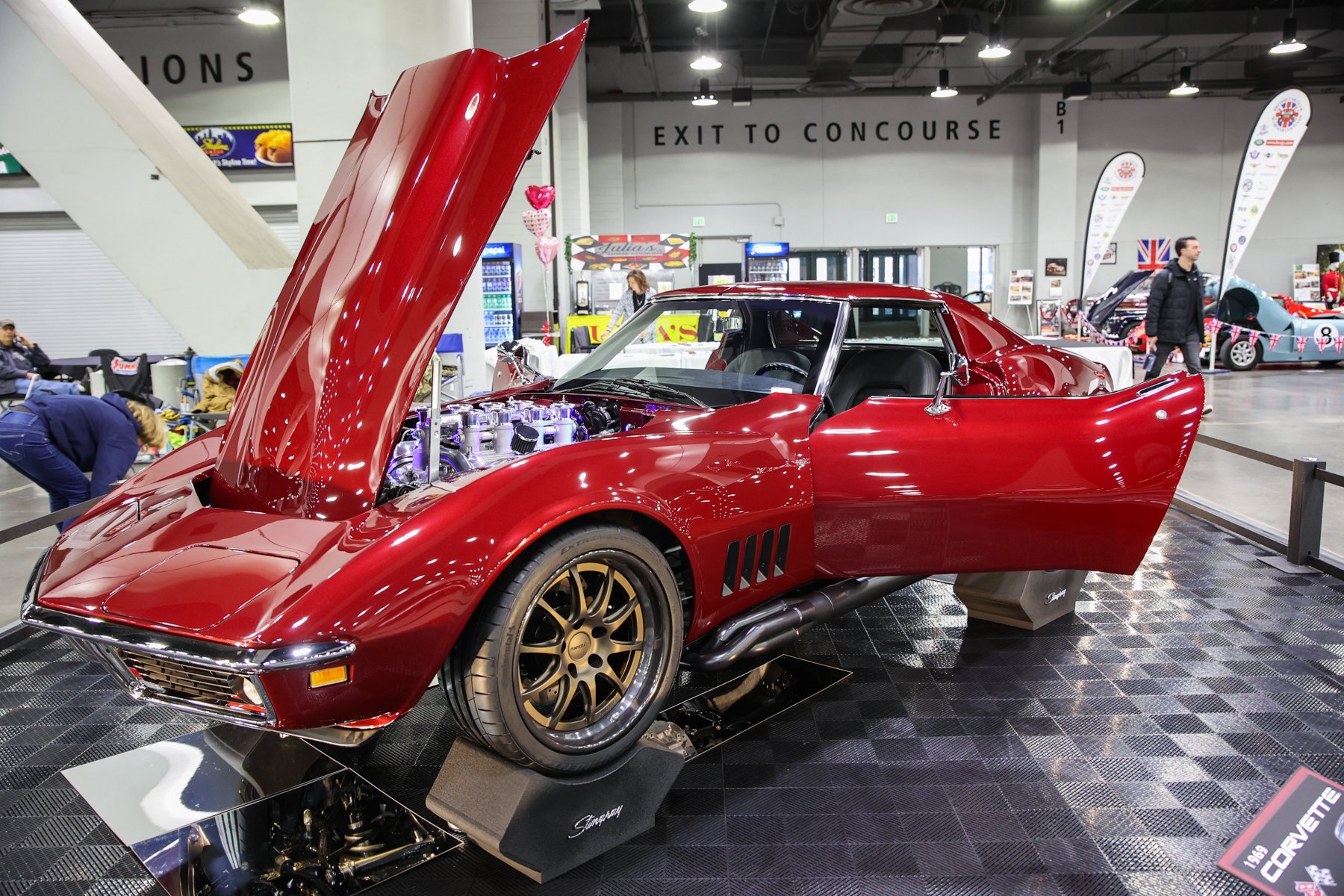
This is a tastefully modified example of a ’69 Corvette. It retains the most of the car’s original timeless design, but with modern touches. (Photo by Brian Wagner)
Who know how many tens of thousands more were swapped out over the last 50-plus years, so when you come across a classic Corvette with an original engine, you’ve really discovered something. [Hence this feature story.]
It is especially satisfying to find a restomodded Chevy without a late-model LS or LT swap.
Don’t think the original 427 is stock, however. Far from it. The engine now displaces 496 cubic inches and sports 310 cc Dart Pro 1 heads, a COMP hydraulic roller camshaft, Johnson lifters, and Harland Sharp 1.7 ratio rockers.
Borla 8-Stack injection is a glorious touch on the original 427 Rat. A Holley Terminator X ECU runs everything. The engine now sports 496 cubes and uses Dart 310 Pro 1 cylinder heads and a COMP hydraulic roller cam. (Photos by Brian Wagner)
The figurative cherry on top is the Borla 8-stack EFI fuel injection run by a Holley Terminator X ECU and dual-sync distributor. The engine was built and assembled by Horsepower Sales of Cincinnati, Ohio.
Factory sidepipes returned to the option list in 1969 (for one year only), but this Stingray uses aftermarket units connected to the headers.
The Corvette lettering from the tail panel and Stingray script from the front fenders has been removed. Gone, too, is the crossed flags emblem on the hood. The only factory identification that remains is the crossed flags emblem on the fuel fill door. (Photos Brian Wagner)
Backing this robust Rat is a Tremec TKX five-speed with a McLeod Street Extreme clutch and 4.56 gears.
Replacing the factory front coil springs and antiquated transverse leaf spring is a Van Steel coilover suspension at each corner. A Borgeson steering box is a huge improvement over the notoriously too-quick factory box.
Making the most of this new suspension of Continental Extremecontact Sport tires, which are wrapped around Forgeline GZ3 wheels.
These Corvettes had great brakes from the factory (12-inch vented rotors with four-piston calipers all around), but those have been ditched in favor of even better Wilwood six-piston stoppers.
The interior of the '68-82 Corvettes was an exciting place to sit, and the Wilkins have done a wonderful job of bringing their cockpit into the 21st century. Best of all, it retains the timeless factory flavor. (Photos Brian Wagner)
A Wilwood electric parking brake kit replaces the never-functional factory setup, so the Wilkins don’t have to put a foot on the clutch, another on the brake, and a third to work the throttle when parked on hills.
This particular ’69 Corvette has been in the same clan for about four decades. It was stored away by the previous family member before Jann and Jim Wilkins of Troy, Ohio, rescued it in 2016 from abandonment.
“The family member we got it from had put it away in the garage and never got to the project,” explained Jim. “Over the years, we finally talked him into letting us acquire the car.
“When our kids were little, it was the first hot rod I drove my kids around in, even though it was not our car, so it has a little history with our family and the kids remembering the loud mufflers and such.”
Initially, the project was supposed to be a simple driver (yeah, right!), but eventually it morphed into what you see here.
Jim and Jann wanted to basically keep it looking like it did from Chevrolet, but added their own touches to it, such as the bulging hood and fender flares in the rear.
When Street Muscle photographer Brian Wagner captured these images, the car was at the first of what would be a few indoor shows. Then, the car was expected to hit the road and put all the big-block power, suspension and brake upgrades to good use.
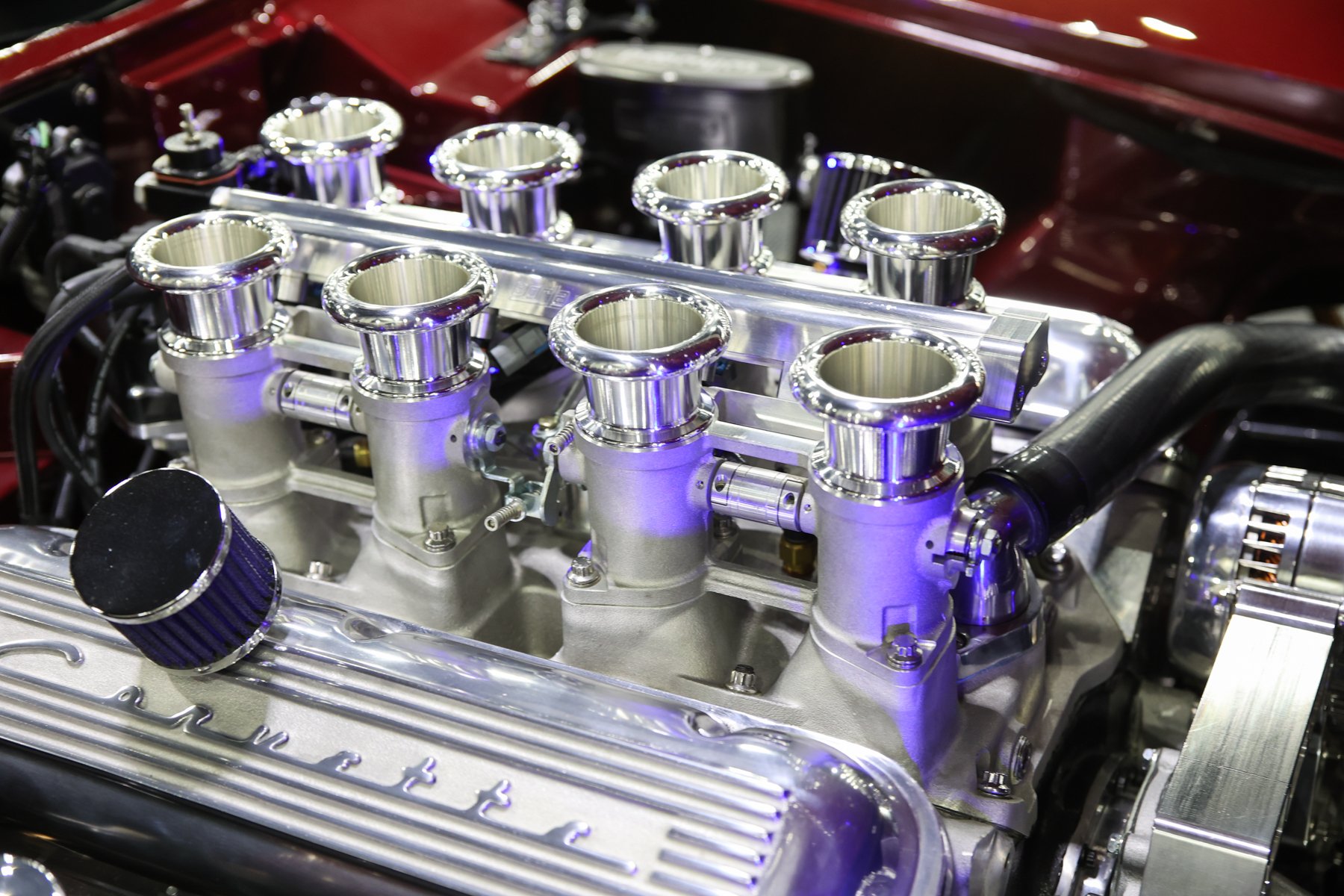
Who doesn’t like stack injection? The valve covers are reminiscent of those used on the ’63-67 high-performance small-blocks, but this is no Mouse motor. (Photo Brian Wagner)
The entire project was quite involved. The Vette was totally disassembled, the body was pulled off the frame (the original frame was kept) and nothing went untouched. The chassis, suspension, and bodywork were done by Burton Kreative Motorwerks in Dayton, Ohio, while the final assembly interior and paint was done by Wicked Whips of Brookville, Ohio.
Subtle touches include the removal of all the “Corvette” and “Stingray” lettering and badges, and the painting of the aluminum front fender trim.
The interior has been completely modernized but retains the classic Corvette flavor (factory-appearing shifter, for example). Its’ a perfect example of how to bring a vintage automobile into the 21st century without going too far over the top.

These sidepipes have always been a popular aftermarket addition to the ’68-up Corvette. (Photo Brian Wagner)
“Gary, the person we got it from, he had a hard time getting rid of it, and he knew that we would do well with it because he’d seen some of our other cars,” related Jann. “He knew it was going to a good home.”


